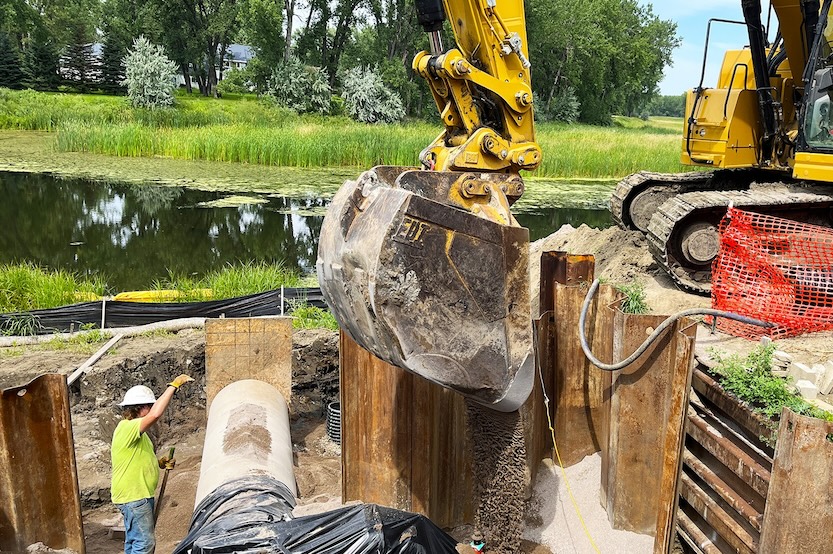Bismarck, N.D. – A major flood mitigation project designed to protect Bismarck’s Wastewater Treatment Plant (WWTP) reached a critical phase this week, with treated water potentially being diverted to an alternate discharge point into the Missouri River beginning today.
The multi-year project has focused on the pipe that connects the WWTP to the river. As part of this phase, treated water is being redirected from the plant’s primary pipe into a secondary drainage system that flows beneath Tavis Road and eventually discharges into the Missouri River. The temporary change is expected to remain in place for up to 10 days.
City officials said the project is intended to prevent water from backing up into the treatment plant during flooding events or ice jams by isolating the discharge pipe from the river.
“In all likelihood, we may never need to use this system, but when you are talking about the flood events of 2009 and 2011, if we had seen the crests that were predicted, we would have been in trouble without this system,” said Public Works Utility Operations Director Michael Mart. “But when we do need to use it, it is going to protect the plant from flooding and will save millions of dollars of potential flood damage to the plant.”
Four signs have been installed along Tavis Road where the treated water enters the drainage system. The public is advised not to swim in, drink from, or recreate in the area during the diversion period. Mart emphasized that the water remains the same quality as what is normally discharged into the Missouri River and complies with all state and federal regulations.
“We’ve contacted the State authorities about the project, as well as nearby homeowners to inform them of the temporary treated water release,” Mart said. “While there isn’t a large concern, at the end of the day, it is still treated effluent. We want everyone to know what it is they are dealing with and give them the information to make the best choices for themselves.”
While treated water is being diverted, crews will be constructing a gate structure, a process expected to last up to 10 days. The project represents one of the final steps in a flood protection system designed to safeguard the city’s wastewater operations for years to come.


